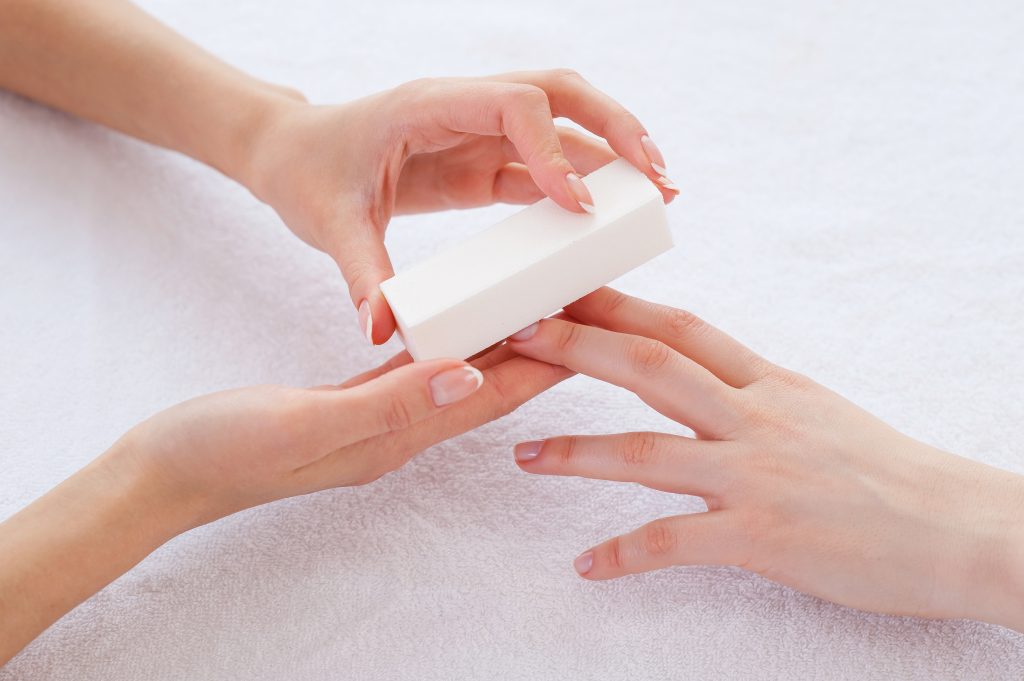
Remove nail glue the right way to keep your natural nails healthy and strong.
Improper removal can lead to peeling, breakage, and even painful damage to your nail beds. While it may be tempting to peel or scrape off the glue, these harsh methods can weaken your nails over time. Instead, using gentle techniques ensures that your nails stay smooth and intact. Plus, taking the extra steps to safely remove the glue helps maintain the overall appearance and strength of your nails, allowing them to grow beautifully without any setbacks.
Choose the Best Way to Remove Nail Glue
Method 1 – Soak in Warm Soapy Water
Remove nail glue effectively by soaking it in warm soapy water, a gentle and non-damaging method. Here’s how to do it:
- Prepare the Soak: Start by filling a bowl with warm water, ensuring it’s comfortable to the touch. Next, add a few drops of mild dish soap or hand soap to the water. This will help break down the glue and soften its grip on your nails.
- Soak Your Fingers: Submerge your fingers in the soapy water for about 10-15 minutes. During this time, the warm water will work to loosen the adhesive bond, making the removal process easier.
- Gently Scrape Off the Glue: After soaking, take a soft toothbrush or a cuticle pusher. With gentle pressure, begin to scrape off the softened glue. Be careful not to apply too much force, as this could damage your natural nails.
- Rinse and Dry: Once you’ve removed the glue, rinse your hands under clean, warm water to wash away any soap residue. Pat your nails dry with a soft towel.
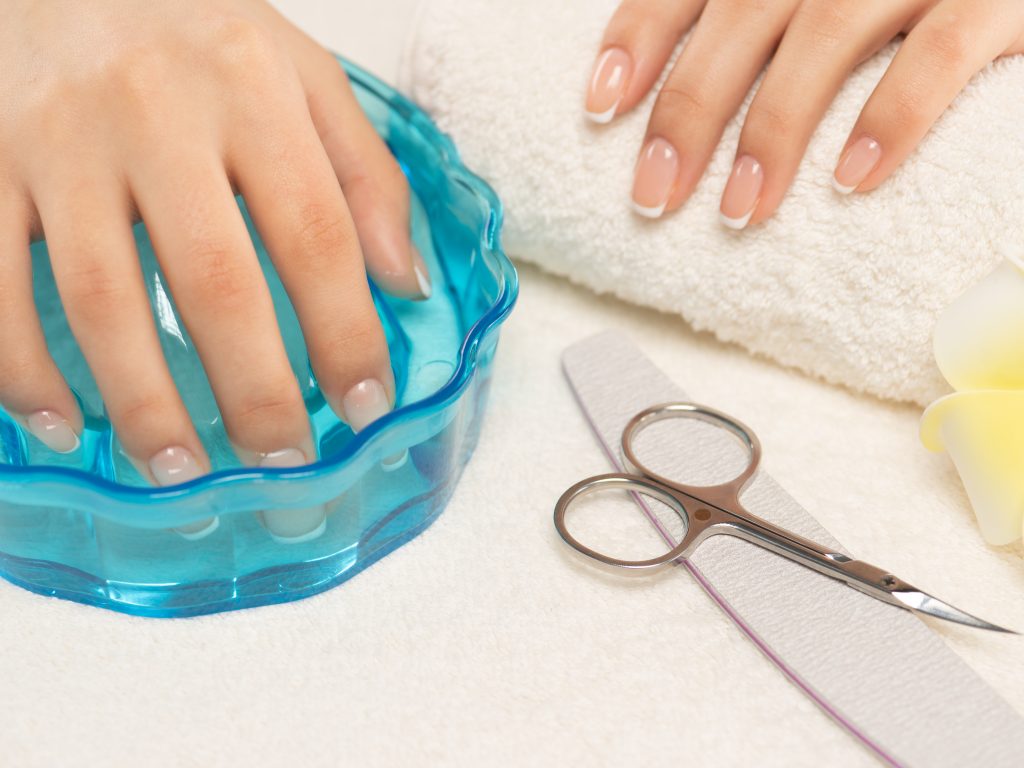
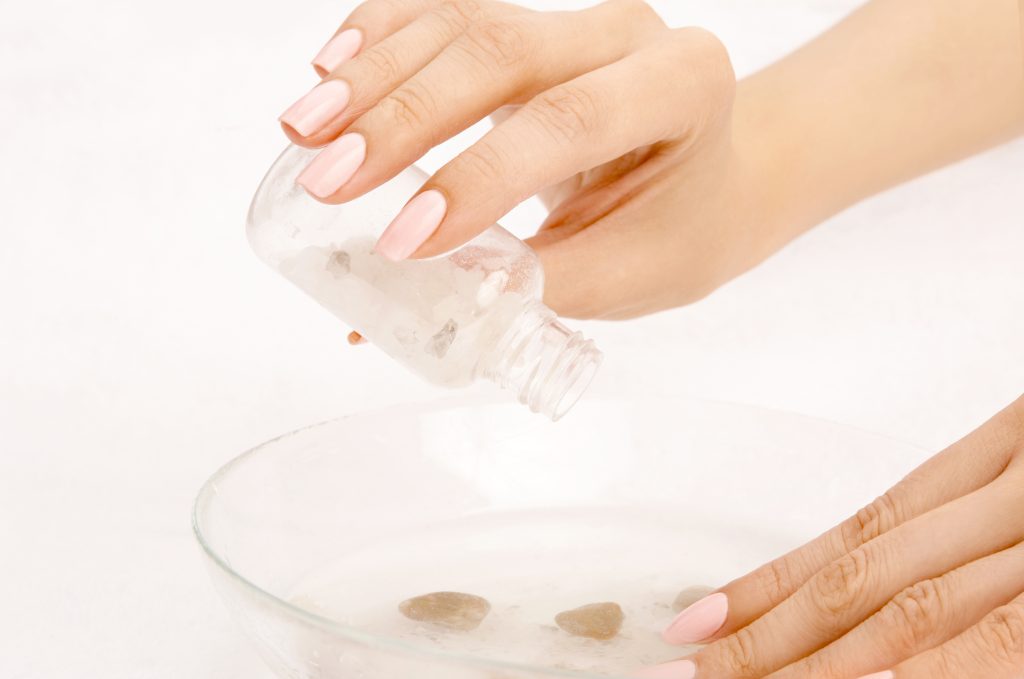
Method 2 – Use Acetone or Nail Polish Remover
Remove nail glue efficiently with acetone or nail polish remover, a potent solution for dissolving adhesive residue. Follow these steps to ensure a thorough and safe removal:
- Choose the Right Remover: Start by selecting an acetone-based nail polish remover. Acetone is effective at breaking down nail glue, making the removal process smoother and quicker.
- Prepare the Soak: Pour a sufficient amount of acetone-based remover into a small bowl. Ensure the bowl is deep enough to submerge your nails comfortably.
- Soak Your Nails: Immerse your nails in the acetone for about 10-15 minutes. During this time, the acetone will penetrate the glue, dissolving it and loosening its bond with your natural nails.
- Wipe Away the Glue: After soaking, take a cotton pad or soft cloth, soak it in the acetone, and gently press it against the area where the glue remains. You may also use your fingers to rub gently and wipe away the softened glue.
- Repeat if Necessary: If any residue persists, repeat the soaking process. Sometimes, particularly stubborn glue may require a second application to fully dissolve.
- Rinse and Moisturize: Once the glue is removed, rinse your nails under warm water to eliminate any acetone residue. Follow up with a generous application of cuticle oil or hand cream to restore moisture to your nails and skin, as acetone can be drying.
Method 3 – Apply Cuticle Oil or Olive Oil
Remove nail glue gently and effectively using cuticle oil or olive oil, a natural and nourishing approach that helps loosen adhesive residue while caring for your nails. Here’s a straightforward guide:
- Choose Your Oil: Begin by selecting a high-quality cuticle oil or extra virgin olive oil. Both options are rich in vitamins and nutrients that benefit your nails.
- Generously Apply Oil: Apply a generous amount of oil directly to the glued areas of your nails. Make sure to cover the entire area, including the surrounding skin and cuticles, for optimal results.
- Let It Sit: Allow the oil to sit for about 5-10 minutes. This resting period is crucial, as it allows the oil to penetrate and soften the glue, making removal much easier.
- Gently Rub Off the Glue: After waiting, use a soft cloth or a cuticle pusher to gently rub or scrape away the softened glue. Be careful to apply only light pressure to avoid damaging your natural nails.
- Cleanse and Moisturize: Once the glue is removed, wash your hands with warm, soapy water to eliminate any excess oil and glue residue. Finally, reapply cuticle oil or hand cream to nourish and hydrate your nails and skin.
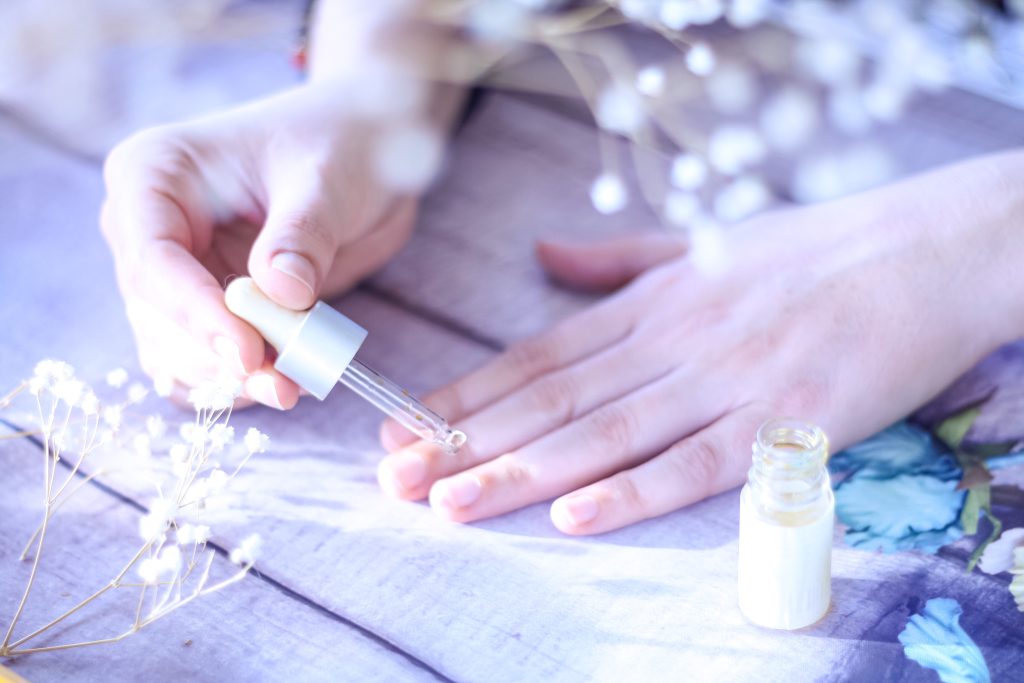
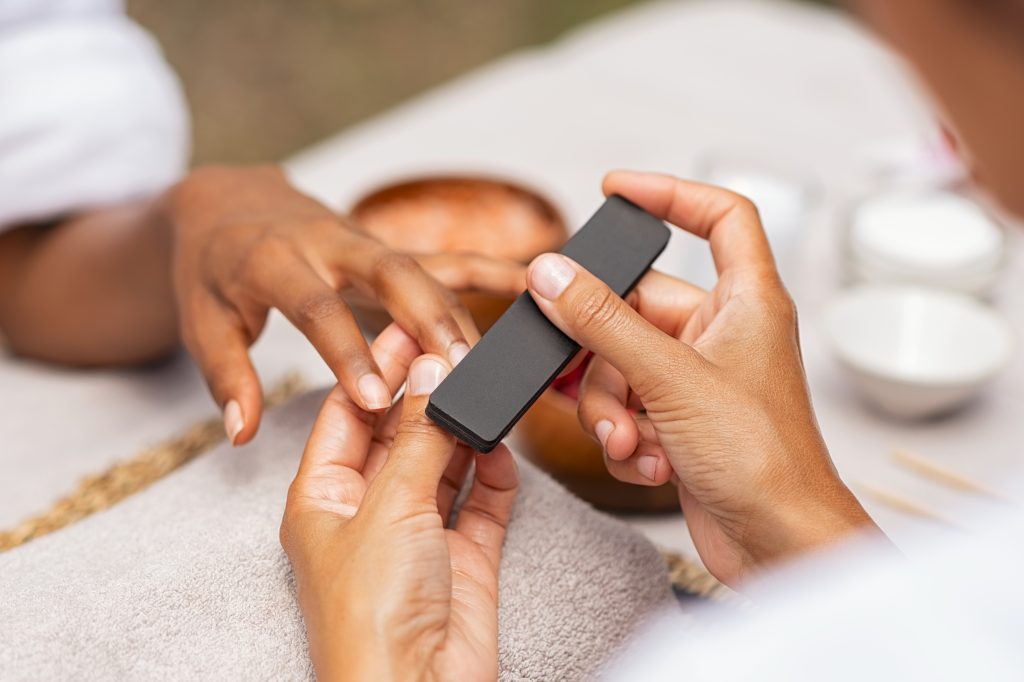
Method 4: Buffer for Stubborn Glue Residue
Remove nail glue that just won’t budge by using a fine-grit buffer, an effective method for tackling stubborn glue residue while ensuring your natural nails remain intact. Here’s how to do it safely:
- Select the Right Buffer: Choose a fine-grit nail buffer designed for smoothing surfaces without causing damage. A buffer with a lower grit number will be more abrasive, so opt for one that is gentle yet effective.
- Gently Buff the Residue: Lightly buff the area where the glue remains, using gentle, circular motions. This process will help to gradually wear away the stubborn glue without over-exerting pressure that could harm your natural nails.
- Check Your Progress: After a few passes, check to see if the glue has been removed. If any residue remains, continue buffing lightly. It’s important to avoid over-buffing, as excessive pressure can lead to thinning or damaging your nails.
- Follow Up with Cuticle Oil: Once the glue is completely buffed away, be sure to apply cuticle oil to your nails. This will help to rehydrate and nourish your nails after the buffing process, restoring moisture and preventing dryness.
Removal Methods – Pros, Cons and Key Comparisons
When it comes to effectively remove nail glue, understanding the strengths and weaknesses of various methods is essential. Each technique has its unique advantages, but they also come with certain drawbacks. Therefore, it’s crucial to consider factors such as time required, ease of use and skin sensitivity before making a choice. For instance, soaking in warm soapy water is a gentle approach but may not tackle stubborn glue effectively. In contrast, acetone is fast and efficient, yet it can be harsh on the skin.
To help you make an informed decision, we’ve compiled a comparison table below that outlines the pros and cons of each method, along with additional criteria for a comprehensive overview. By weighing these factors, you can select the best method that suits your needs.
| Pros | Cons | Time Required | Ease of Use | Effectiveness | Skin Sensitivity | |
|---|---|---|---|---|---|---|
| Soak in Warm Soapy Water | Gentle on nails. Hydrates skin. Easy to do. | May not work on stubborn glue. | 10-15 minutes | Easy | Moderate | Low |
| Use Acetone or Nail Polish Remover | Fast and effective. Dissolves most adhesives. Widely available. | Can be drying to nails. Strong odor. | 10-15 minutes | Moderate | High | Low to Moderate |
| Apply Cuticle Oil or Olive Oil | Nourishes and hydrates nails. Gentle on skin Natural option. | May require repeated application. | 5-10 minutes | Easy | Low | Low |
| Buffer for Stubborn Glue Residue | Effective for tough residue. Quick process. | Risk of damaging nails if over-buffed. | 5-10 minutes | Moderate | High | Low |
Do’s and Don’ts for Safe Removal
Do’s:
- Use a Gentle Approach: Always start with the least abrasive methods to avoid damaging your nails.
- Protect Your Skin: Apply a barrier, like cuticle oil, around your nails to prevent irritation from removal products.
- Test Products First: If using acetone or any remover, test it on a small area to check for any adverse reactions.
- Follow Instructions: Adhere to the recommended time for soaking or applying products to avoid overexposure.
- Hydrate Afterwards: After removal, apply cuticle oil or hand cream to nourish and hydrate your nails and skin.
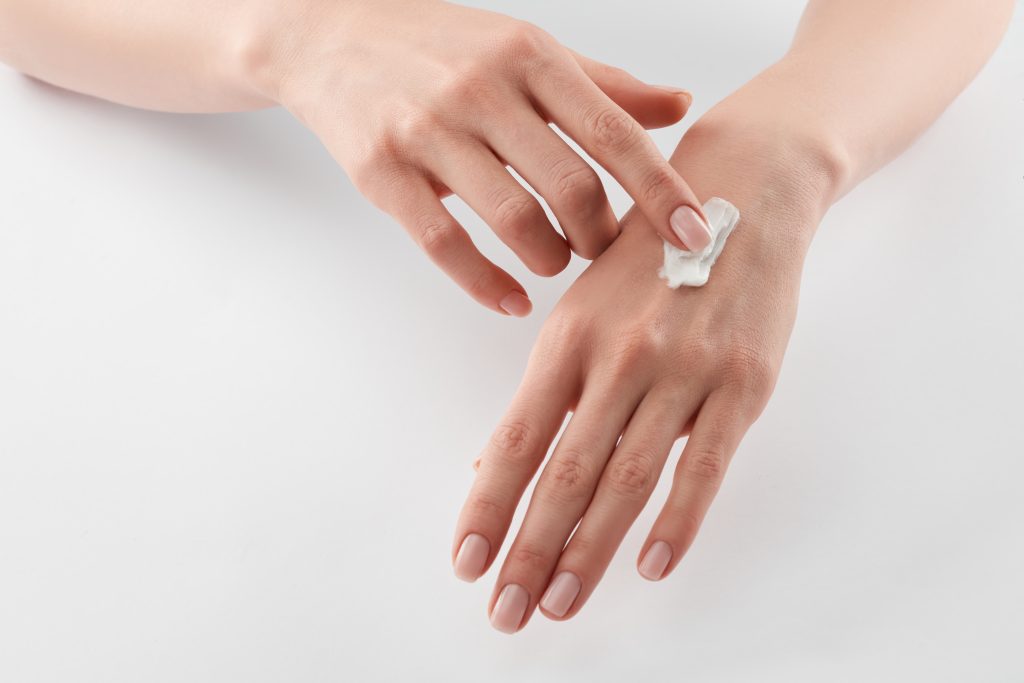
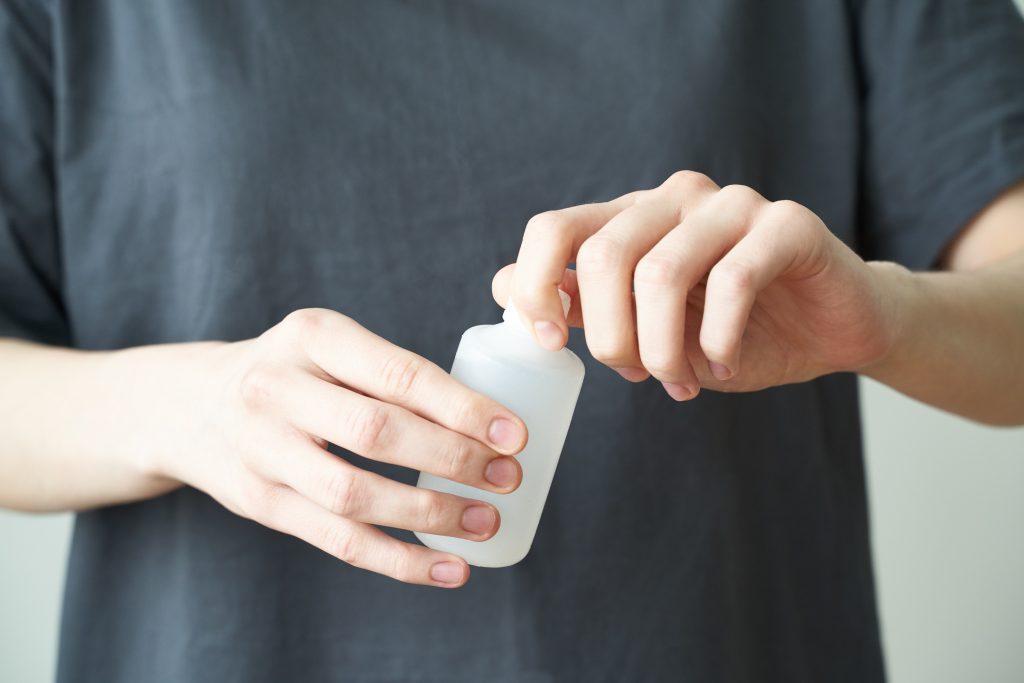
Don’ts:
- Rush the Process: Take your time to allow products to work effectively, as rushing can lead to nail damage.
- Force or Pull: Avoid yanking or pulling off glue; this can damage the nail bed and surrounding skin.
- Use Metal Tools Harshly: If using tools like a cuticle pusher, be gentle to prevent injury or tearing of the nail.
- Skip Moisturizing: Neglecting to moisturize can lead to dryness and brittleness in your nails.
- Use Harsh Chemicals: Avoid non-nail-safe products, as they can cause more harm than good during removal.
Post-Removal Care Tips
- Hydrate with Cuticle Oil: Immediately apply cuticle oil to nourish and moisturize your nails and cuticles after removal.
- Use a Strengthening Treatment: Consider using a nail strengthener to help reinforce and protect your nails, especially if they feel weak or brittle.
- Moisturize Your Hands: Apply a rich hand cream to keep your skin hydrated and prevent dryness from removal processes.
- Avoid Polish for a Few Days: Give your nails a break from polish to recover and regain strength after the removal process.
- Gently File Rough Edges: If there are any rough or uneven edges, gently file them with a fine-grit nail file to prevent snagging or tearing.
- Practice Good Nail Hygiene: Keep your nails clean and dry and avoid exposing them to excessive moisture or harsh chemicals for a few days.
- Consider Regular Breaks: To maintain nail health, consider regular breaks between applications of nail glue or enhancements to allow your nails to recover.
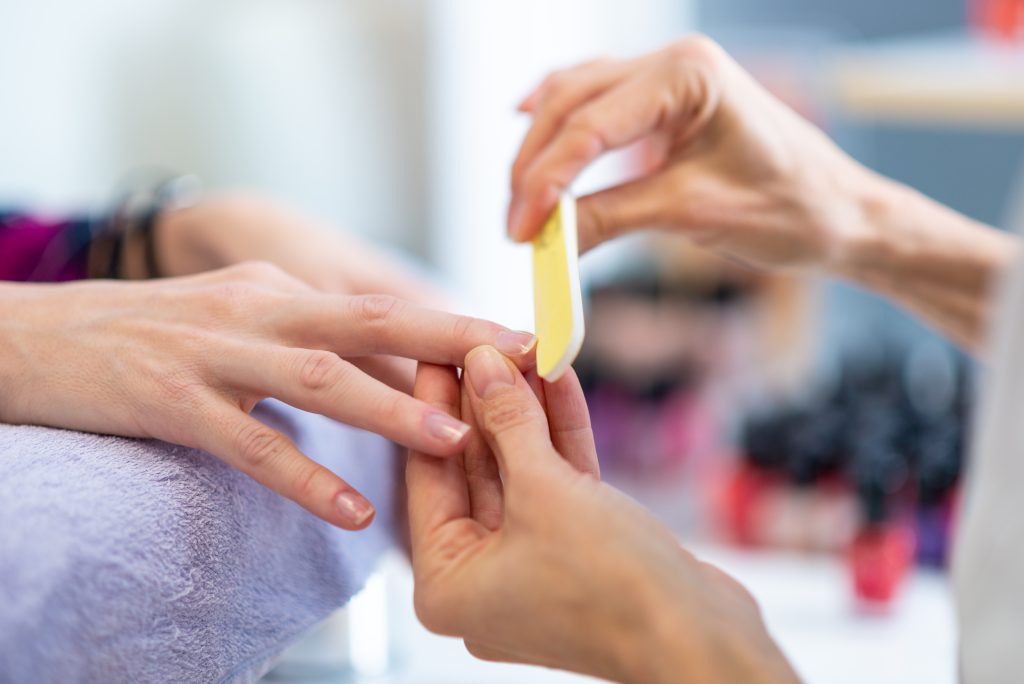
FAQ
What are the best methods for removing nail glue?
Several effective methods exist for removing nail glue, including soaking in warm soapy water, using acetone or nail polish remover, applying cuticle oil or olive oil, and gently buffing with a nail buffer. Each method has its pros and cons, so you may want to choose one based on your specific needs and the strength of the glue.
How long should I soak my nails in water or acetone?
For optimal results, it is generally recommended to soak your nails in warm soapy water for about 10-15 minutes. If using acetone, the same duration applies. However, if you find that the glue remains stubborn, you may need to repeat the process until it loosens sufficiently.
What should I do if my nails feel weak after removal?
If your nails feel weak after removing the glue, it’s essential to provide them with some TLC. First, apply cuticle oil or a nail strengthener to restore moisture and strength. Additionally, consider taking a break from polish or glue for a few days to allow your nails to recover fully.
Is it safe to use nail glue frequently?
While nail glue can be used safely, frequent application may lead to weakened nails over time. Therefore, it’s advisable to allow your nails to rest between applications. By doing so, you can maintain their health and minimize potential damage.
Where can I find nail glue products in Canada?
You can find nail glue products in Canada through various retailers, both in-store and online. One excellent option is the Swan Beauty website, which offers a wide range of nail glue products at competitive prices. Their selection includes popular brands and high-quality options, making it easy to find what you need


Real Estate Jot -
Great tips! Nail glue can be tricky to remove, so it’s awesome to have these easy and effective methods to try at home. Definitely going to give these a go next time I need to fix my nails.